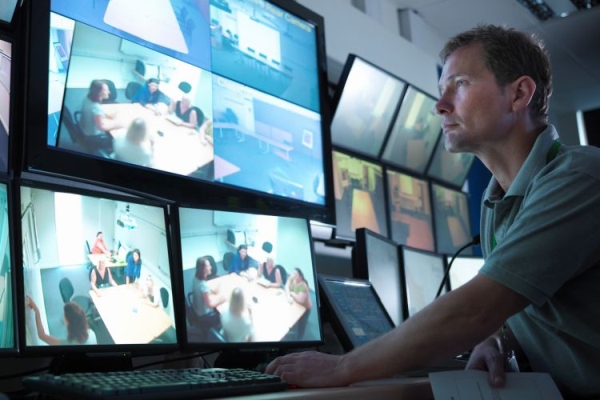Published on the 17/11/2022 | Written by Heather Wright

The tech has moved a lot faster than the law…
Employers trying to keep an eye on staff via surveillance technology have been put on notice by a NSW Parliamentary Committee, which has called on the NSW Government to consider amending workplace surveillance laws in order to better protect employees.
The final report of the Select Committee on the Impact of Technological and Other Change on the Future of Work and Workers in NSW warns that outdated – or non-existent – laws are giving employers, motivated by bottom lines, free rein when it comes to employee surveillance and automation.
“Our government has not ensured adequate worker safety, doing little to plan for the future of work.”
Final Report – Workplace Surveillance and Automation calls for the Workplace Surveillance Act 2005 to be updated to take into account workplace surveillance and advancements in technologies, and create clear privacy protections for workers – regardless of whether the surveillance occurs in NSW or elsewhere.
It also recommends the NSW government consider amending workplace surveillance laws to require external approval prior to companies implementing any surveillance.
While some workplace monitoring is designed to improve workplace safety and protect employees or highly sensitive data, two years of pandemic-induced work from home has ushered in an array of new employee-monitoring technologies and fuelled growth for others, many aimed at ensuring staff aren’t slacking off.
The technologies on offer range from software monitoring website visits, taking screenshots throughout the day and tracking keyboard and mouse movements to microphones being monitored, GPS tracking and, for those in the workplace, video cameras.
Using that and other information, some software can provide predictive and behavioural analytics, enabling companies to track how productive their teams are, and to feed algorithms for HR functions including hiring and firing.
In New Zealand, tech companies reported a 300 percent increase in sales of employee monitoring in the first three months after the country went into lockdown in March 2020.
Worker micro-surveillance has seen an eight-fold increase in funding in the last five years according to reports.
But that growth in monitoring has come with increasing concerns. Among the key issues raised are questions around the accuracy and fairness of the systems, with some remaining fairly rudimentary and inaccurate when it comes to data interpretation.
Microsoft was one of those falling foul of customers and privacy campaigners over its efforts to introduce tools to measure employee productivity through monitoring the likes of emails sent with the tech giant dialling down its Productivity Score feature in Microsoft 365 in December 2020.
The psychological impacts of the technologies – including increased stress and anxiety for workers and the counter-productive impacts are also causing pause for thought. Stripped of Agency: The Paradoxical Effect of Employee Monitoring on Deviance, from US academics, showed monitored staff were more inclined to ‘misbehave’.
Last year the European Commission’s Joint Research Council warned the increase in employee surveillance was threatening to undermine trust and commitment to work by staff left in the dark about why and how data on them was being gathered.
The JRC report, Electronic Monitoring and Surveillance in the Workplace, found workplace surveillance had grown more pervasive through the ‘datafication’ of work, in particular through the use of algorithmic platforms often used by gig economy companies such as Uber and Amazon. The algorithms are often used as a basis for judging, allocating – and rewarding – performance.
In Australia and New Zealand, meanwhile, employees were clear in their views on monitoring when working from home. In a 2021 Unisys report, 24 percent of Kiwi respondents and 23 percent of Australian, said they weren’t ok with any monitoring. Forty-one percent of Kiwis, and 38 percent of Australians, were ok with login and logout times being monitored, but that still leaves around 60 percent unhappy with the idea.
Resistance to other forms of monitoring, including keeping webcams on during meetings, monitoring computer use by facial recognition (Australia 18 percent, NZ 16 percent) and monitoring via microphone (AU 15 percent, NZ 10 percent) was even more fierce.
As we roll towards 2023 Forrester has put trust as a key business and technology priority, saying in the coming year regulators will scrutinise greenwashing, misinformation and employee surveillance, ‘fuelled by the ire of fed-up employees’.
Some jurisdictions are already doing so: New employee privacy laws came into effect in New York earlier this year, requiring employees to provide written notice to staff prior to engaging in some monitoring activities.
That’s in line with the NSW select committee’s views, with it saying any update to the Workplace Surveillance Act 2005 should include improved notification requirements enabling employees to negotiate and oppose proposed surveillance.
“Employers, motivated by bottom lines, are unchecked and unchallenged in their use of these tools, reaping the benefits that flow,” the report says.
“Employees, stressed by constant monitoring, lack adequate protections, are side-lined in the process and do not share in the benefits.”
The report is critical of the lack of government action, noting that it is ‘lagging behind with outdated or non-existent laws’ and ‘has not ensured adequate worker safety, privacy and protection, doing little to plan for the future of work’.
“Evidence to this inquiry makes it clear that we cannot leave the fate of our workplaces and indeed the labour market in the hands of tech companies – it is for us to shape. The social and economic prosperity of our society rests on it.”
The Select Committee is also recommending the NSW Government consider amending work health and safety laws to regulate the allocation of work by software, platforms, code, algorithms and apps.
It also suggests amending work health and safety and other laws including to address growing concern around work intensification, enabling workers to refuse excessive or unreasonable workloads or intrusions into personal and family time and the right to disconnect from work devices and the obligation to respond to work communications for set periods of time outside work hours.



























